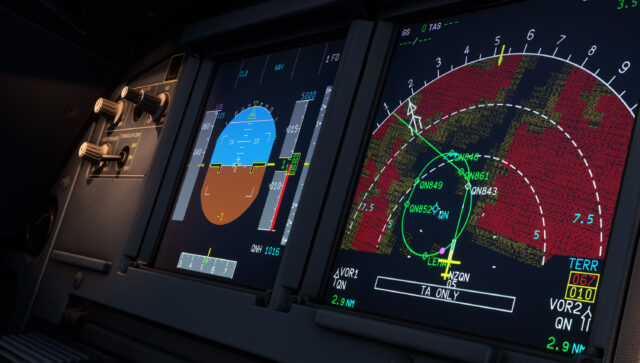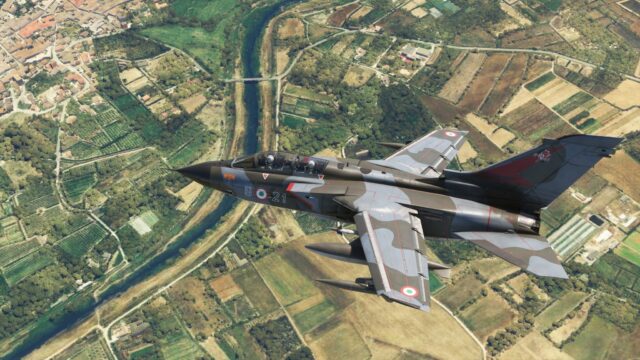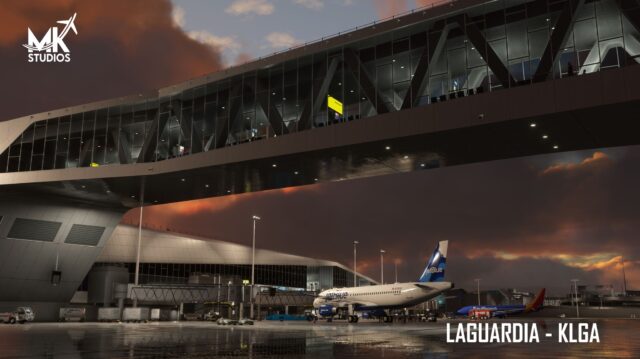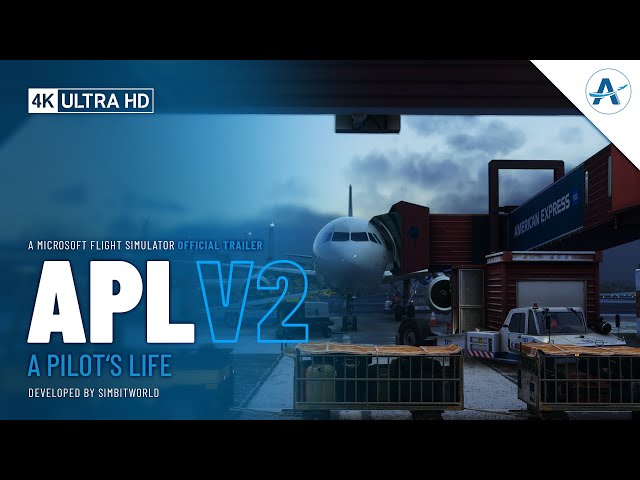The people at Dream Factory Studio have been involved with the well-respected Sim-Wings publishers for several years (specifically France 1 and 2, Spain 2, and the island of Malta) so come with a good reputation to sustain. Now they are doing it alone and having first produced Scandinavian Airports 2, they are now concentrating on individual large European airports including, so far, Geneva Cointrin, and now this one.
The 36Mb package is available as a download from Simmarket (www.simmarket.com) at a cost of €21.95. Following confirmation of your credit card payment you will be presented with a download link and the product serial code will be sent to your email address. I found installation very straightforward and fast with automatic installation and activation of the new scenery in the scenery config file of FS9 by the entry of two new layers (one each for the scenery and for land class). It’s not yet available for FSX, and not clear if or when it will be so. Other system requirements include 512 MB RAM, 128Mb Graphics Card and a Pentium 2 GHz (or equivalent presumably). However, these are minimum requirements and my opinion is that you’ll ideally need higher specs than these, as this scenery seemed to me to be quite demanding of resources when I tested it.
Following installation you’ll find a DreamfactoryStudio folder has been created within FS9. This will in turn contain a Brussels sub-folder with a Brussels land class directory (5 files in a scenery folder) and a Brussels scenery directory (97 files in the scenery folder and 927 files in the texture folder). You’ll also find a DreamfactoryStudio menu item within your Windows Start/Programs function giving access to the manual, the forum (at the DreamfactoryStudio website) and the uninstall function. The manual is very disappointing in size being all of 4 pages — fortunately it does give links (as does the DreamfactoryStudio website) to sites where you can download excellent charts for the airport and approach/departure plates etc. (www.ivao.be or www.beluxvacc.org).
By way of background information, an airport first appeared at the site of Brussels Zaventem during the Second World War as a result of construction by the German occupation forces. Following the war, a permanent terminal building was constructed in 1948 followed by a more modern and larger main terminal in 1958 (still standing today but almost completely out of use) with piers and satellites (just one pier with satellite remains today). In 1994 a brand new pier B was opened situated to the North of the former main terminal — very functional but rather ordinary in appearance. Construction on a parallel pier A (a better and more futuristic design), yet further to the North again, was well under way when 9/11 happened. This, coupled with the fact that the national Belgian airline Sabena ceased trading shortly afterwards meant that by the time that this new pier opened in 2002, the airport found itself in the remarkable position of having very modern airport infrastructure with a copious volume of airbridge-serviced airliner parking spaces, but somewhat of a collapse in air traffic (interestingly, just prior to 9/11 there were 4 flights daily on average between Brussels National and Dublin — 3 Aer Lingus and 1 Sabena — this is now reduced to just 2 Aer Lingus daily on weekdays. Thankfully, this situation has now improved considerably and the airport is seeing considerable growth in passenger and cargo traffic. In 2006, Brussels was ranked 80 in the top 100 airports in the world as regards number of passengers (16.5 million) and 29th out of the top 35 airports in terms of cargo tonnage (690,000 tonnes). Now there are over 60 airlines serving Brussels to destinations on all continents except Australia and South America, making it a truly international airport. In addition, it is a hub for the newly emerged replacement for Sabena, Brussels Airlines, as well as DHL, Singapore Airlines Cargo, Jet Airways and European Air Transport. Several major cargo airlines visit Brussels, in addition to those mentioned, and it also includes military functionality with a NATO/Belgian Air Force facility being located at the Northeast of the field.
The airport was awarded best airport in Europe status in 2005. Ironically, it is the subject of a local dispute over night flights, maybe not surprising given the large number of nocturnal cargo flights. It has three runways — 25L [10,535 ft/approach course 252ï‚°/ ILS 110.30] /07R [approach course 072ï‚°], 25R [11,936 ft /approach course 247ï‚°-ILS 108.90] / 07L [approach course 067ï‚°] and 02 [10,535 ft/approach course 016ï‚°/ ILS 109.90] / 20 [approach course 196ï‚°/ ILS 111.15]. You’ll notice that the two East-West main parallel runways are in fact not parallel by a matter of a few degrees. In practice, most approaches are onto 25L, followed by 02, and most departures are on 25R, followed by 07R or 02. The VOR /DME at Brussels [BUB 114.60] is situated just beyond the end of runway 25R.








0 Responses
Pity however is that the scenery creates a lot of telephone and electricity poles and billing boards someway NW of Zaventem and ruin therefore the airfield of Grimbergen scenery.